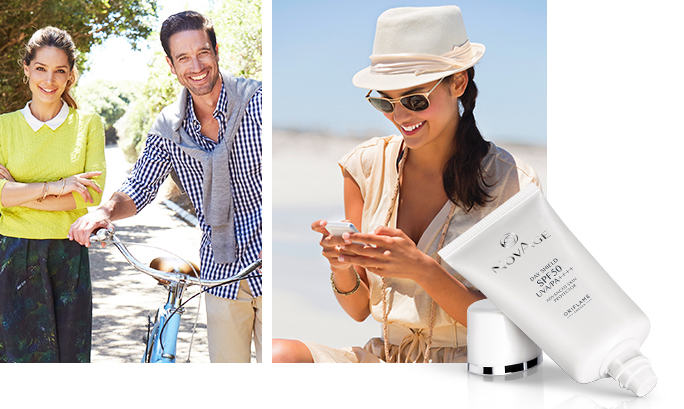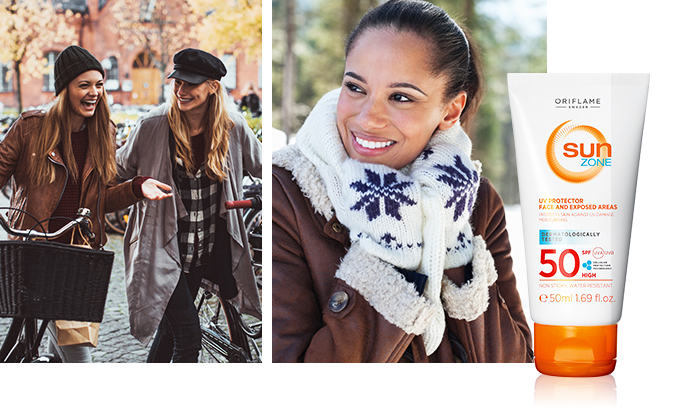1. SPRING
In the start of spring, the intensity of UV radiation increases quicker than at any other time of the year. This is also the time of year where your skin has the lowest amount of melanin, and is therefore extra vulnerable to UV radiation.
What you should do:
As humidity and temperatures increase, the skin’s natural oil production increases as well. Use lighter skin care products and at least an SPF 15 (depending on your skin type). We recommend using a Sun Zone Lotion under your day cream or replace them both with a high-performing cream like the NovAge Day Shield SPF30 - Advanced Skin Protector.
Cover up. Wear a broad-brimmed hat, long-sleeved shirts and long pants until your skin has adapted to the new weather. Tips: If you can see light through a fabric, UV rays can get through too.

2. SUMMER
Summer brings longer days and maximal UV radiation – a combination that is sure to increase your daily UV exposure. The good news is that your melanin levels have increased throughout spring, which gives you some built-in defence. Still, sunscreen is vital to protect your skin from ageing and damage that can lead to dark spots, wrinkles, and possibly skin cancer.
What you should do:
Use a water-resistant broad spectrum sunscreen with an SPF of 30 or higher, when swimming or spending long hours doing outdoor activities. Apply it generously to exposed skin - don’t forget your ears, neck, hands or feet. We recommend any of the Sun Zone products or NovAge Day Shield SPF 50. Also, protect your lips with a lip balm containing SPF like the Giordani Gold Rejuvenating Lip Balm SPF 12.
Wear UV-blocking sunglasses with large frames to protect your eyelids and the delicate skin around your eyes.
Remember that there’s no such thing as a healthy tan. A tan is your skin’s response to the sun’s harmful rays. Don’t spend hours basking in the sun!
Although clouds can help reduce heat from reaching the earth, they cannot prevent all of the sun’s UV radiation. So even when it’s cloudy, cover up and apply sunscreen to all exposed skin.

3. AUTUMN
Due to falling temperatures and indoor heating your skin gets drier, starting with the surface. And if the UV damage that occurs in spring and summer has led to a thicker corneous layer, then your skin won’t be sufficiently moisturised from the inside either.
What you should do:
Care for your skin by addressing the thickened corneous layer through gentle peeling, massage etc. It is also important to be diligent about moisture care. Make sure you follow the full routine morning and evening.
4. WINTER
Your skin is more susceptible to dryness in winter, than at any other times of the year. This is due to different elements such as cold, biting winds, and dehydrating indoor heating.
You might think that UV radiation isn’t a problem during this time, but you’d be very wrong! The snow and ice actually reflects UV radiation which means that you have twice the exposure: both direct and indirect (reflective). It has been claimed that snow can reflect up to 80 % of UV radiation, while sand can reflect up to 25 %. So don’t put away your sunscreen!
What you should do:
If you’re mostly indoors you can choose sunscreen, primer and foundation or a foundation that with SPF 20 or below.
If you’re into winter activities like skiing and snowboarding, you will be exposed to reflective UV radiation. So up your sunscreen to SPF 50 – we recommend Sun Zone UV Protector Face and Exposed Areas SPF 50 High.
Wind burnt lips can be a pain, so prevent it with a soothing lip balm with SPF!



